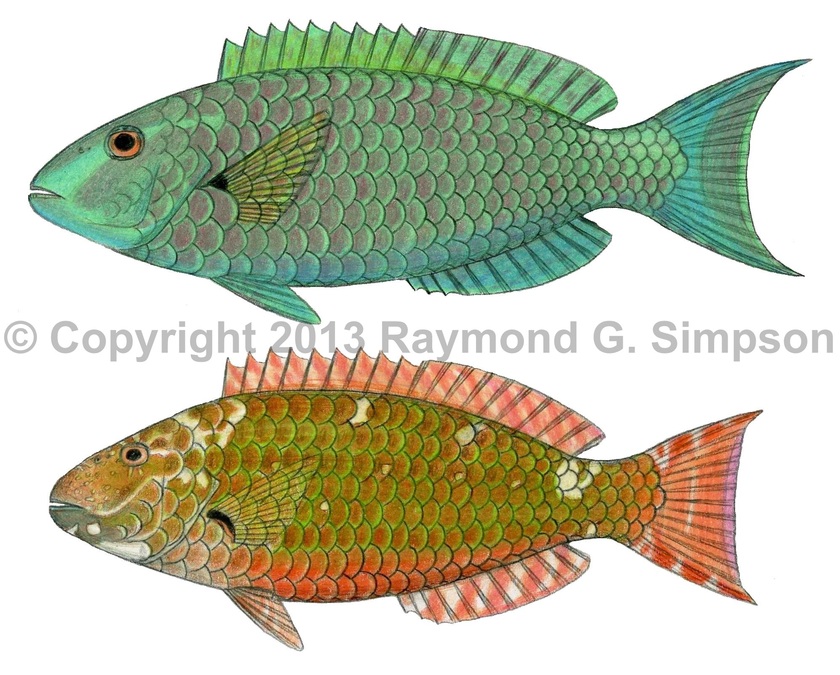
Common Name
Brazilian Parrotfish
Year Described
Agassiz, 1831
Identification
Dorsal Fin: IX, 10
Anal Fin: III, 9
Pelvic Fin: I, 5
Pectoral Fin: 13
Gill Rakers: 15-20 (first arch)
A fairly robust parrotfish with a slightly convex frontal profile. Snout blunt. Teeth are fused into a beak but retain a scalloped cutting edge. Anterior nostril with a fleshy flap and up to 6 cirri. Lower teeth overhang upper when jaws are closed. Caudal fin truncate in juveniles, emarginate in IP individuals, and lunate in TP individuals. Body, rear of head, and median fin bases with scales. Predorsal scales usually four. A single row of scales on cheek.
Color
TERMINAL PHASE: Body bright blue, blue-green, greenish, or brownish. The scale centers are duller green to red-brown, contrasting with scale edges. Some individuals with a strong yellowish cast. The duller reddish pigment on the head often gives the impression of blue band running from mouth to eye. Eye is pink. The is no blue marking in pectoral area (unlike S. chrysopterum). Dorsal fin is body colored. Anal fin is blue. Pectoral fin yellowish with a dark blotch at the base. The caudal lobes are body colored with a dark blue crescent and a bright blue posterior edge. INITIAL PHASE: Body dark reddish brown to olive green with numerous white flecks and blotches. A large white or yellow saddle marking on the caudal peduncle. Body color grades into a red belly with white scale edges. Head usually heavily marked with white spots and lines. Some fish are uniformly dark with the white saddle blotch. Fins range from uniform red to heavily marked with white. Caudal fin red with white banded lobes. JUVENILES: Reddish with two lateral white stripes on side. Fins reddish.
Size
Maximum size to 345mm TL.
Habitat
Coral reefs, rocky reefs, and seagrass beds from 5-45m.
Range
Southwestern Atlantic: Northern Brazil to SE Brazil, including St. Paul's Rocks and Trindade Island.
References
Moura, R.L., J.L. de Figueiredo & I. Sazima. 2001. A new parrotfish (Scaridae) from Brazil, and revalidation of Sparisoma amplum (Ranzani, 1842), Sparisoma frondosum (Agassiz, 1831), Sparisoma axillare (Steindachner, 1878) and Scarus trispinosus Valenciennes, 1840. Bull. Mar. Sci. 68(3):505-524.